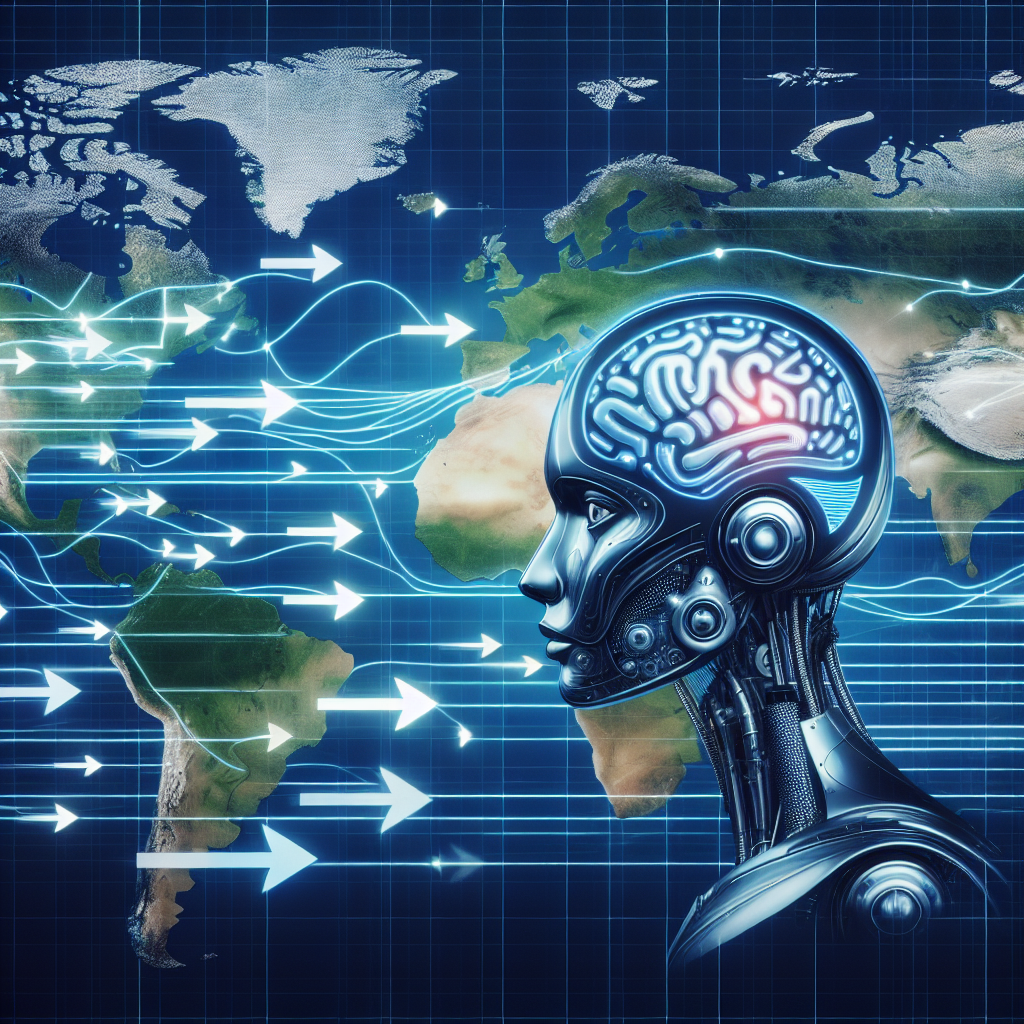Introduction
Artificial Intelligence (AI) has revolutionized various industries, from healthcare to finance, and now it is making significant strides in the immigration sector. With the increasing number of people crossing borders for work, study, and resettlement, immigration processes have become more complex and time-consuming. AI technologies are being utilized to streamline these processes, enhance security measures, and improve overall efficiency in managing immigration flows.
Streamlining Immigration Processes
One of the key benefits of AI in the immigration sector is its ability to streamline processes and reduce the time and effort required for visa processing and border control. AI-powered systems can automate manual tasks such as document verification, background checks, and data entry, which can significantly speed up the processing time for immigration applications.
For example, AI-powered chatbots can assist visa applicants in filling out forms, providing real-time answers to their questions and guiding them through the application process. This not only saves time for both applicants and immigration officers but also ensures that applications are completed accurately and efficiently.
AI technologies can also be used to analyze large amounts of data to identify patterns and trends that may indicate potential security risks. By using machine learning algorithms, immigration agencies can quickly assess the risk level of visa applicants and flag high-risk individuals for further scrutiny, while expediting the processing of low-risk applicants.
Enhancing Security Measures
In addition to streamlining processes, AI is also being used to enhance security measures in immigration systems. With the rise of global terrorism and transnational crime, it has become crucial for immigration agencies to strengthen their border control and security protocols.
AI-powered facial recognition technology is being used at border checkpoints to verify the identity of travelers and detect individuals who may be on watchlists or have fraudulent documents. This technology can match the faces of travelers against a database of known criminals or suspects, allowing immigration officers to quickly identify and apprehend potential threats.
AI can also be used to analyze social media and internet activity to gather intelligence on individuals who may pose a security risk. By monitoring online behavior and identifying suspicious patterns, immigration agencies can flag individuals for further investigation and prevent potential threats from entering the country.
Overall, the use of AI in immigration systems has the potential to significantly enhance security measures and improve the ability of immigration agencies to detect and prevent threats to national security.
FAQs
Q: How is AI being used in visa processing?
A: AI is being used in visa processing to automate manual tasks such as document verification, background checks, and data entry. AI-powered chatbots can assist visa applicants in filling out forms and provide real-time answers to their questions, streamlining the application process.
Q: How does AI enhance security measures in immigration systems?
A: AI enhances security measures in immigration systems by using facial recognition technology to verify the identity of travelers and detect individuals who may be on watchlists or have fraudulent documents. AI can also analyze social media and internet activity to monitor online behavior and identify potential threats.
Q: What are the benefits of using AI in immigration systems?
A: The benefits of using AI in immigration systems include streamlining processes, reducing processing times, enhancing security measures, and improving overall efficiency in managing immigration flows.
Q: Are there any potential drawbacks to using AI in immigration systems?
A: Some potential drawbacks of using AI in immigration systems include concerns about data privacy, bias in AI algorithms, and the potential for errors in automated decision-making processes. It is important for immigration agencies to address these issues and ensure that AI technologies are used ethically and responsibly.
Conclusion
AI technologies are transforming the immigration sector by streamlining processes, enhancing security measures, and improving overall efficiency in managing immigration flows. By automating manual tasks, analyzing data, and identifying potential security risks, AI is revolutionizing the way immigration agencies process visa applications and monitor border control.
As AI continues to evolve and become more sophisticated, it is likely that its role in immigration systems will only increase in the future. By harnessing the power of AI, immigration agencies can improve the accuracy and speed of visa processing, strengthen security measures, and better protect national borders.
Overall, the integration of AI in immigration systems has the potential to make immigration processes more efficient, secure, and transparent, benefiting both governments and individuals seeking to cross borders for work, study, or resettlement.

